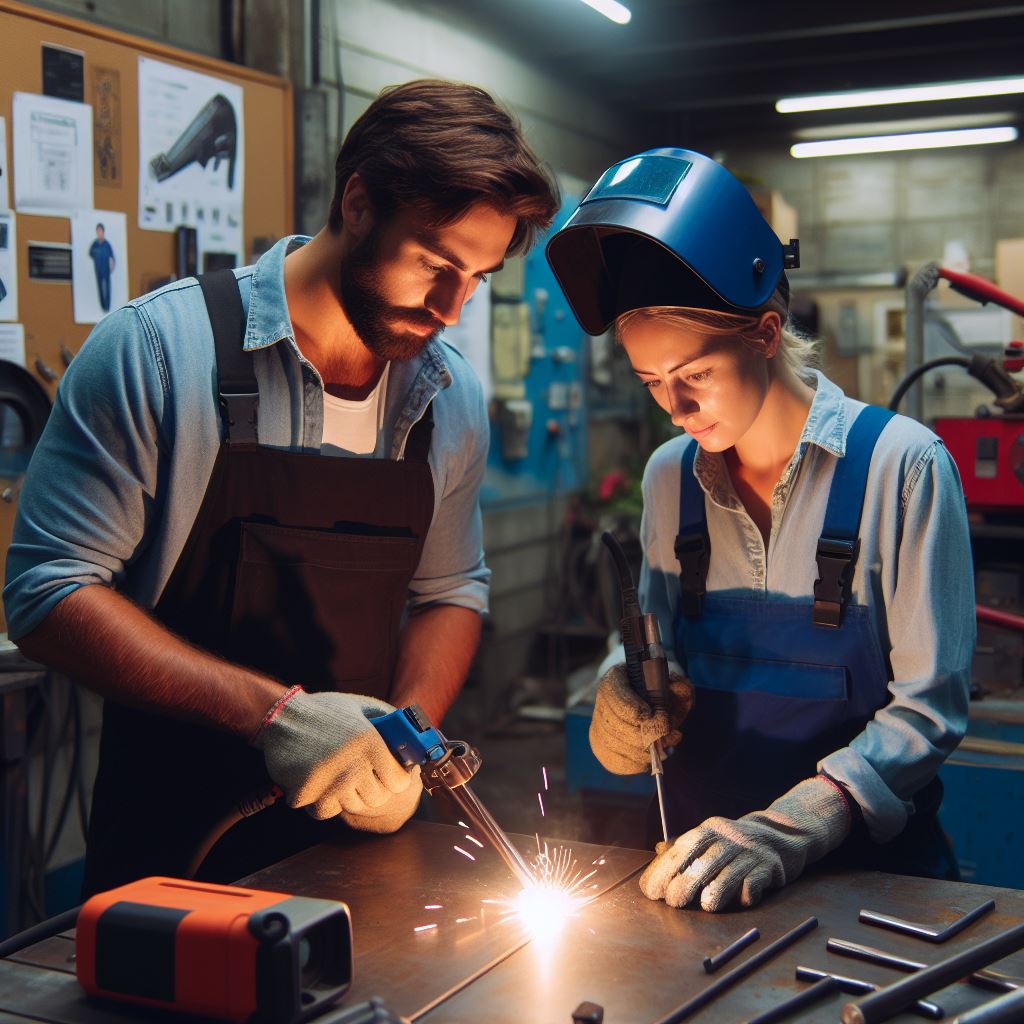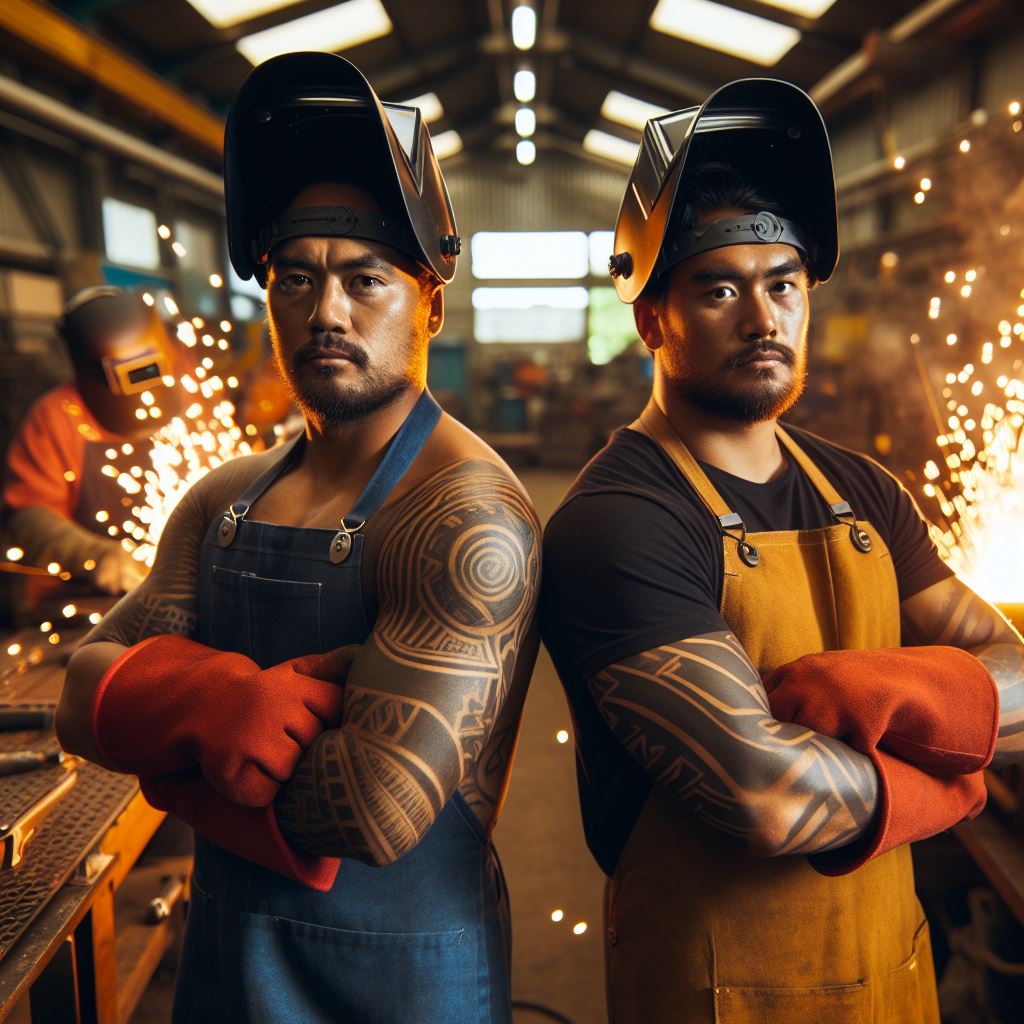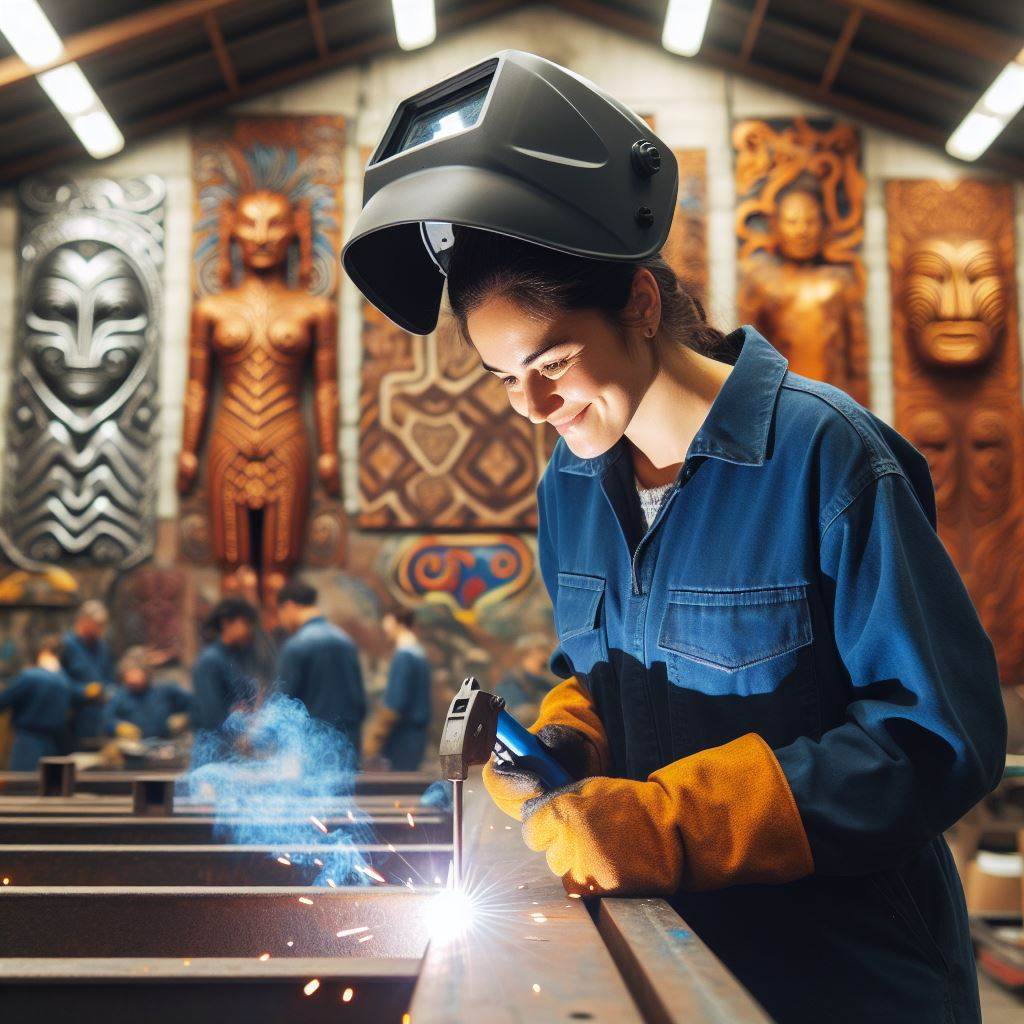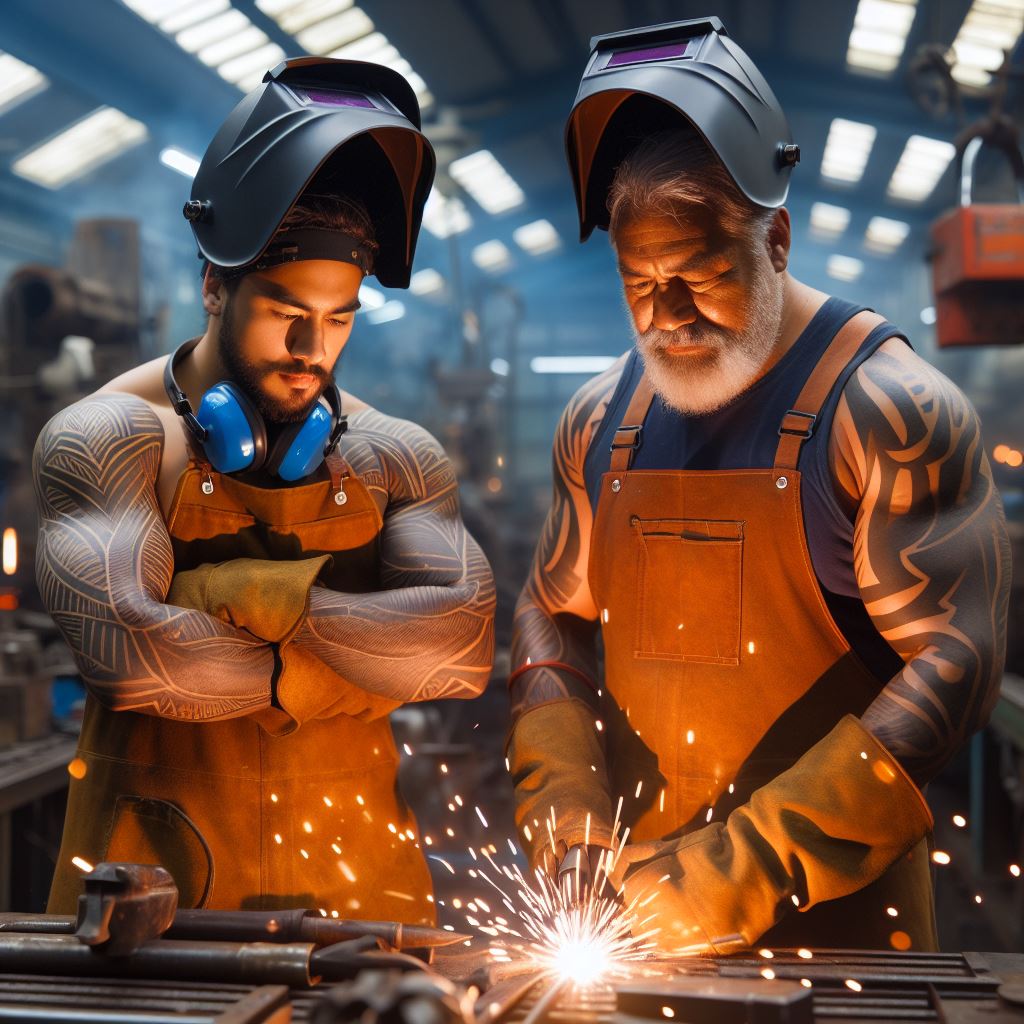Introduction
In this blog section, we will discuss the importance of welder’s safety in New Zealand. lets discuss on Welder Safety.
Welding is a crucial skill used in a variety of industries, but it also poses significant risks to the welders themselves.
Implementing proper safety measures is vital to protect the health and well-being of welders.
In New Zealand, where welding plays a significant role in industries like construction, engineering, and manufacturing, ensuring welder’s safety is particularly relevant.
Let’s explore the tips and gear that can help safeguard welders in their work.
Importance of Welder’s Safety
Welding is a crucial process in many industries, including construction, manufacturing, and automotive.
While it plays a significant role in creating strong and durable structures, welders must prioritize safety to avoid potential hazards and risks.
Welding involves the use of high temperatures, intense light, and hazardous materials, making it essential for welders to understand the potential dangers they may face during their work.
The potential hazards and risks associated with welding
One of the primary hazards in welding is exposure to harmful fumes and gases.
These can include toxic substances such as carbon monoxide, nitrogen dioxide, and ozone.
Prolonged exposure to these fumes can lead to respiratory problems, eye irritation, and even lung diseases.
Another risk in welding is the potential for burns and eye injuries.
The intense heat and bright light produced can cause severe skin burns, and the sparks generated can easily enter the eyes if not properly protected.
Welders need to wear appropriate personal protective equipment, such as fire-resistant clothing and welding helmets, to minimize these risks.
Additionally, welding involves working in confined spaces, which can lead to asphyxiation or exposure to gases.
Adequate ventilation is essential to ensure the proper exchange of air and reduce the risk of suffocation or the buildup of hazardous gases.
The need for welders to prioritize safety over convenience
While it may be tempting for welders to take shortcuts or ignore safety measures for the sake of convenience or efficiency, this mindset can have severe consequences.
Prioritizing safety should always be the top priority, even if it means taking extra time or effort.
Welders should always follow safety procedures, such as wearing protective gear, ensuring a safe working environment, and regularly inspecting equipment.
Proper training and continuous education on safety practices are also crucial to reduce the likelihood of accidents and injuries.
The long-term health implications of not practicing proper safety measures
Ignoring safety measures in welding can have severe long-term health implications for welders.
Prolonged exposure to toxic fumes and gases can lead to respiratory diseases, including bronchitis, asthma, and even lung cancer.
Excessive exposure to UV radiation from welding arcs can cause eye problems, including cataracts and other vision impairments.
The harmful effects of these hazards may not be immediately apparent, but they can develop over time and significantly impact a welder’s overall well-being.
Furthermore, accidents due to negligence or lack of safety measures can result in severe injuries or even fatalities.
Burns, cuts, falls, and electrical shock are common risks associated with welding, and they can lead to permanent disabilities or loss of life.
In essence, welder’s safety is of utmost importance.
Understanding the potential hazards and risks, prioritizing safety over convenience, and practicing proper safety measures can significantly reduce the likelihood of accidents, injuries, and long-term health issues.
It is essential for both employers and welders to promote a culture of safety in any welding environment.
Read: Kiwi Carpenter Salary Insights 2024
Safety Tips for Welders in NZ
Overview of Safety Protocols to be Followed by Welders
- Welders should receive proper training and certification to ensure their competence and adherence to safety protocols.
- Establishing a safe work environment is crucial, including clear pathways, proper lighting, and organized work areas.
- Using personal protective equipment (PPE) is essential to minimize the risk of injuries and exposure to harmful substances.
- Proper ventilation must be maintained to prevent the accumulation of hazardous fumes and gases.
- Implementing fire safety measures such as having fire extinguishers and ensuring a fire-resistant workspace is important.
- Welders should be knowledgeable in handling hazardous materials and substances, using appropriate containment and storage techniques.
Proper Training and Certification Requirements
Welding is a skilled trade that requires comprehensive training and certification.
In New Zealand, welders must undergo proper training programs accredited by reputable institutions.
These programs equip them with the necessary knowledge and skills to perform their duties safely and effectively.
Training courses cover various aspects of welding, including proper machine operation, understanding welding techniques, and compliance with safety regulations.
Certification is obtained after successful completion of training and passing the required examinations.
Welders who possess valid certifications can provide reassurance to employers and clients that they have received proper training and are competent in their field.
It also demonstrates their commitment to safety and professionalism, making them more attractive to potential employers.
Establishing a Safe Work Environment
To ensure the safety of welders, it is crucial to establish a safe work environment that minimizes potential hazards.
Employers should conduct regular safety inspections and implement necessary improvements to prevent accidents and injuries.
Clear pathways should be maintained throughout the workspace to avoid tripping hazards.
Proper lighting is essential for visibility, especially in areas where intricate welding work is conducted.
Workspace organization and clutter management are also vital to prevent accidents and keep the area clean.
Ensure equipment grounding, use insulated gloves, inspect wiring regularly for hazards to maintain electrical safety.
Using Personal Protective Equipment (PPE)
Welders must wear appropriate personal protective equipment (PPE) to safeguard themselves from potential hazards.
This includes wearing protective clothing, such as flame-resistant coveralls, gloves, safety glasses, and a welding helmet with the correct filter lens.
The choice of PPE should be based on the specific welding process and potential hazards involved.
Welders should be trained to properly inspect, maintain, and replace damaged or inadequate PPE to ensure its effectiveness.
Ensuring Proper Ventilation
Proper ventilation is crucial in welding environments to prevent the accumulation of hazardous fumes and gases.
Employers should implement efficient local exhaust ventilation systems, such as fume extractors and fans, to remove pollutants from the breathing zone.
Outdoor welding should be considered whenever feasible to reduce exposure to hazardous fumes.
When working indoors, adequate airflow should be maintained by opening windows or using mechanical ventilation systems.
Implementing Fire Safety Measures
Welding involves the use of intense heat, sparks, and flammable materials, making fire safety measures essential.
Employers must place fire extinguishers conveniently and train staff in their use. Workspaces require fire-resistant design and separation of welding from flammable materials..
Regularly inspect electrical wiring, equipment, and storage areas to identify potential fire hazards.
Handling Hazardous Materials and Substances
Welders often work with hazardous materials and substances, such as cutting agents, chemicals, and gases.
Proper handling, containment, and storage practices should be followed to minimize the risk of accidents, spills, and exposure.
Train welders to store and dispose of hazardous materials properly, keeping them in well-ventilated areas, away from ignition sources.
They should also use appropriate personal protective equipment when handling chemicals and gases, such as gloves and respiratory protection.
Regular risk assessments should be conducted to identify potential hazards and determine the appropriate control measures to be implemented.
Welders in New Zealand can ensure a safer working environment by following safety tips and protocols, minimizing risks.
Read: Carpenter Apprenticeships in NZ Explained

Safety Gear for Welders in NZ
When it comes to welding, safety should be the top priority. Proper safety gear is essential for welders to protect themselves from potential hazards.
In New Zealand, there are several key safety gear items that every welder should have:
Personalized Career Consulting
Unlock your potential with expert career advice tailored to your goals. Get personalized guidance and actionable steps toward your dream career in New Zealand.
Get StartedWelding Helmet with Shade Filter
A welding helmet is critical for protecting the welder’s face and eyes from harmful UV radiation and flying sparks. It should have a shade filter that can be adjusted according to the intensity of the welding task.
Safety Goggles and Face Shields
Along with a welding helmet, safety goggles and face shields provide additional protection for the eyes and face.
They should be made of impact-resistant materials to shield against potential sparks, debris, and chemicals.
Heat-Resistant Gloves and Clothing
Welders must wear heat-resistant gloves to safeguard their hands from extreme temperatures and potential burns.
Additionally, they should wear flame-resistant clothing to protect their body from sparks and molten metal.
Respiratory Protections
Welding produces hazardous fumes and gases, making respiratory protection vital. Welders should wear masks or respirators specifically designed to filter out airborne particles and toxic fumes.
Hearing Protection Devices
The noise generated during welding can be damaging to the ears. Welders should wear earplugs or earmuffs that provide adequate hearing protection to prevent long-term hearing damage.
Safety Boots or Shoes
Welding often involves heavy objects and hot materials, making safety boots or shoes a must. They should have sturdy soles, toe protection, and be made of materials that can resist heat and sparks.
Proper Fire Extinguishers and First Aid Kits
Accidents can happen even with all the necessary precautions. It’s crucial for welders to have easily accessible fire extinguishers and well-equipped first aid kits in case of emergencies.
By using the appropriate safety gear listed above, welders in NZ can significantly reduce the risk of injuries and create a safer work environment. Remember, safety should never be compromised!
Read: NZ Carpentry: Skills and Tools Needed
NZ Regulations and Standards for Welder’s Safety
The role of New Zealand regulations in ensuring welder’s safety
New Zealand regulations play a vital role in ensuring the safety of welders across the country.
These regulations are designed to protect welders from potential hazards and promote a safe working environment.
By enforcing compliance with these regulations, the authorities aim to prevent accidents, injuries, and long-term health issues related to welding.
Regulations establish clear guidelines and safety standards for welders and employers to follow actively.
These guidelines encompass various aspects of welding, including equipment maintenance, work practices, ventilation, protective clothing, and training requirements.
By adhering to these regulations, welders can minimize the risks associated with their profession.
The relevant safety standards implemented by New Zealand authorities
The New Zealand authorities have implemented several safety standards to ensure the well-being of welders.
These standards are aligned with international best practices and are continuously updated to keep up with advancements in technology and safety measures.
One of the essential safety standards is the AS/NZS 4836:2011 “Safe Working on Low-voltage Electrical Installations.
“This standard outlines the safety requirements for electrical systems used in welding activities, reducing the risk of electric shock and fire hazards.
It details the proper installation, operation, and maintenance of electrical equipment, ensuring the safety of welders and others working in the vicinity.
Another crucial standard is the AS/NZS 1674.1:2018 “Safety in Welding and Allied Processes.
” This standard covers a wide range of welding-related safety aspects, including risk assessment, hazard control, personal protective equipment (PPE), and welding-related fumes and gases.
By implementing this standard, employers can create a safer work environment and protect the health of their workforce.
Provide information on where to find and access these regulations and standards
Welders and employers can easily access the relevant regulations and standards for welder’s safety in New Zealand.
The primary sources for these documents are various government websites and regulatory bodies.
The most reliable source of information is the WorkSafe New Zealand website (www.worksafe.govt.nz).
It provides comprehensive guidelines and regulations specific to welding safety under the “Guidance” section.
Welders can find detailed information on safe work practices, risk assessments, and personal protective equipment requirements.
Additionally, Standards New Zealand (www.standards.govt.nz) offers access to the AS/NZS standards, including AS/NZS 4836:2011 and AS/NZS 1674.1:2018.
These standards can be purchased online and provide detailed instructions and requirements for ensuring welder’s safety.
In general, New Zealand regulations play a crucial role in safeguarding welder’s safety.
Welders must follow guidelines and safety standards actively to minimize risks and protect their well-being.
Welders and employers can access these regulations and standards through websites like WorkSafe New Zealand and Standards New Zealand to ensure compliance and prioritize safety in welding operations.
Read: Top Carpentry Courses in New Zealand
Conclusion
Prioritizing welder’s safety is crucial when engaging in welding activities in New Zealand.
Ignoring safety measures can lead to serious injuries and accidents.
Therefore, it is important to follow the key safety tips and use the appropriate gear.
To recap, the importance of welder’s safety cannot be stressed enough.
Welders face numerous hazards, including exposure to harmful fumes, high temperatures, and the risk of fire or explosion.
By prioritizing safety, welders can protect themselves from these risks and ensure a safer working environment.
We encourage all readers to make safety a top priority when engaging in welding activities.
This means diligently following safety guidelines, such as wearing appropriate protective clothing, including welding gloves, helmets, and goggles.
Additionally, ensuring proper ventilation and using fume extractors can help minimize exposure to dangerous fumes.
It is also essential to use the correct equipment, such as welding machines with built-in safety features and reliable grounding systems.
Regular maintenance and inspection of equipment are necessary to ensure their safe and efficient operation.
In closing, welder’s safety should never be compromised.
By following key safety tips such as proper gear usage, adequate Ventilation, and equipment maintenance, welders can protect themselves and others while carrying out welding activities in New Zealand.
Safely enjoying this profession starts with a commitment to safety.
Transform Your Career with a Professional CV and Cover Letter
Stand out to employers with an ATS-optimized resume and tailored cover letter designed to match your dream role. Let us craft your job application materials for success!
Get Started



